Strikes in History of Mankind
Labor strikes are nothing new in the nation’s history or the world’s history for that matter. Biblical accounts in Genesis mention how the workers building the Tower of Babylon had had enough, threw down their tools and protested. The first historically confirmed labor strike was in ancient Egypt’s 10th Dynasty in 1152 BCE. It seems Pharaoh Ramses III felt paying the labor force to erect the Royal Necropolis at Deir el-Medina wasn’t a priority, so the workers went on strike feeling Ramses II should see how far he gets doing the work himself.
The first historical account of a strike -though the term still hadn’t been used yet – was on July 30th, 1619 at the Jamestown, Virginia colony. Craftsmen brought from Poland by John Smith to make a variety of glassware and pitch products. The governor felt the Polish were ethnically inferior and on those grounds had no right to vote in the colony’s affairs. Way to win them over John! They protested by not working at all and Mr. Smith got the message and conceded.
It wouldn’t be until 1768 London that the term “strike” was officially used and coined by a group famous for their own cant or jargon – sailors. Up to that time “industrial dispute” or “work stoppage” had been common usage. When sailors removed sails they were said to be “struck.” In this particular case the sailors were supporting demonstrators that were protesting the imprisonment of John Wilkes and the subsequent shooting to death of six citizens by British troops in an event called the Massacre of St. George’s Fields. The topgallant (pronounced t’gallant) sails were “struck” disabling the merchant ships in port, certainly earning the attention they desired.
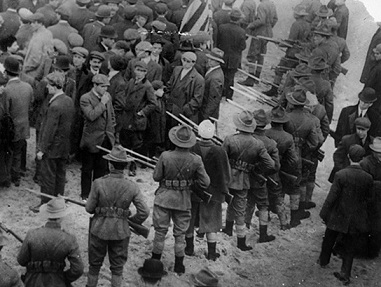
The Slow Death of Whaling, the Growth of Textiles
By the 1870s whaling began to wane a bit, and the textile industry stepped up to fill in the gap. This spurred a New Bedford population growth by almost double, drawing immigrants from all over the world, particularly French-Canadians. To say that working conditions were horrendous would be an understatement. There weren’t as many safety laws on the books back then. Fatalities were pretty high. It wasn’t uncommon for workers to begin at 5:00 a.m. and work as late as 8:00 p.m. with few, very brief breaks. A typical work week was Monday through Saturday. That meant a back-breaking 80+ hour work week. It also wasn’t uncommon for children as young as 8 years old to be on the labor force. Though to be fair, having children in the labor force was looked on a bit differently then. Many families saw a lot of children as a way to increase the household income so it wasn’t necessarily frowned upon in the social context of the day.
By 1906 technological advances within the textile industry had helped it turn into a boom that had drawn even more ethnic groups, including Cape Verdeans, Portuguese, and Western Europeans. It is said by this time 3/4 of the region’s population were immigrants. Perhaps hyperbole, but it illustrates the high immigrant population that has seemingly always been a part of New Bedford. As an industry, textiles had surpassed whaling in terms of economic might and the businesses couldn’t squeeze enough hours out of a day to turn profits. It was this environment that prompted a lockout (employer doesn’t allow employees to work) on August 24, 1912 that affected an estimated 11,000-13,000 workers. The power was in the hands of the employer at this time and labor unions held little. It’s tough to imagine what more the employers wanted from their employees that were already working 12-15 hour days, 6 days a week.
In the coming decades from the lockout onward, times began to change. Labor unions were more common and fought for worker’s rights and improved working conditions. President Theodore Roosevelt (1901-1909) had a favorable disposition towards worker’s right and regulating big business helping ease some conditions, but really only helping them go from atrocious to appalling. When President Woodrow Wilson (1913-1921) came on the scene he began to crack down on child labor, long work days and workers’ compensation. Conditions, wages, and rights still had a log way to go. In 1924, whaling was considered a dying if not dead industry. This meant the workforce was flooded with more workers than ever before and since textiles was booming industry there were more workers to be had than ever. Being able to easily, and virtually instantly replace a worker meant what little momentum had been gained for workers had stalled.
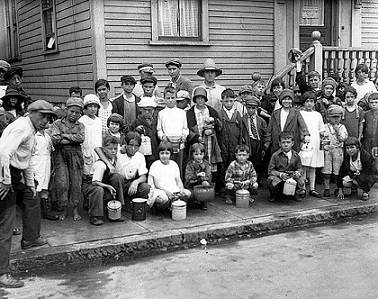
Precedence of the Passaic Textile Strike; Standard of Living in New Bedford
An average mill worker at this time was making approximately $1,000 a year, with females earning a few hundred less. That’s an average of $19-20 per week. $1,900 was considered the minimum necessary to survive in the late 1920s. So after a 60-80 hour work week, needs were still not being met. This historic communist-led Passaic Textile Strike of 1926 in New Jersey was a victory for workers started a chain reaction. Within two years, some of the same people involved with the momentous New Jersey strike, particularly the Passaic Local, began to get involved here in New Bedford. The economy after WWII began to slow down a bit and overproduction was a serious issue. With a bloated inventory and not enough sales clearing it, some mill owners slowed production, but enough continued on producing. On April 9, 1928 an organization of twenty-seven mill owners called the New Bedford Textile Manufacturers’ Association decided that the solution was a pay cut of 10% effective on April 16th that included skilled and unskilled alike. This went over like a fart in church. Workers who weren’t even meeting the standard of living, were in no mood to accept a 10% pay cut.
Thus Begins the Strike
Workers went on strike on their own initially on April 16th. The union that spearheaded the move was the Textile Council led by William E.G. Batty. It wasn’t difficult getting the workers to support the strike, as evidenced by the fact that very few souls showed up for work, in spite of the fact that many weren’t even part of the union. The three local newspapers at the time were in full support of the workers. Even New Bedford Mayor Charles F. Ashley requested that the wage cut be delayed. Once the communist activists that helped the Passaic Textile strike succeed got wind of what was going on in New Bedford, they immediately jumped into action. They were represented by by William Murdoch and Fred Beal and called the Textile Committee. It should be noted that a sole mill -Beacon Mill owned by Brit Walter Langshaw- stood out, by immediately quitting the New Bedford Textile Manufacturers’ Association, taking responsibility for overproduction, and released a statement deriding the other mill owners for their greed, intolerance and lack of consideration. He even pointed out that many higher-ups who were requesting a workers’ cut were bringing home as much as $25,000 annually.
![]()
“What’s the Matter with New Bedford? New Bedford is the largest cotton textile center in New England…Now the looms are stopped! The Mills are closed! The operators walk the streets! Why? The future of our great industry is at stake! Be Fair. Be Just. Be Constructive.” – New Bedford mill owners ad in the local Newspaper.
It seemed as if the estimated 25,000-30,000 workers were off to a fortuitous start. There was hope that an agreement could be had quickly. There was even a festive mood, as workers were said to have brought families to the picket lines and had picnic lunches, and the local movie theaters had swelled. However, the two unions fighting for the workers were conflicted on their overall goals and desires. William Batty’s Textile Council simply wanted the 10% cut repealed, but the communist led Beal and Murdoch’s Textile Committee’s wants was quite a list with a number of demands. They went far further than the Textile Council and felt nothing less than the following should be met: allow anyone to be part of the union, no more child labor, relaxing forced production quotas, a 5 day work work week, 8 hour work day, 20% wage increase and equal pay for women.
The Textile Committee felt they were doing something historic and trying to set a precedent for the entire nation. They were thinking “big.” The Textile Council thought more local. They wanted New Bedford workers to have job security and felt fewer demands would translate into a speedier resolution. The felt the communist’s ideas were too lofty and unrealistic and would mean people would be out of work for a long time coming. The two unions vehemently disagreed and began to fight one another. To further make matters difficult, skilled workers wanted to distance themselves from unskilled workers and their particular demands.

The mill owners’ response was to place ads in the newspaper. One in particular stated “What’s the Matter with New Bedford? New Bedford is the largest cotton textile center in New England…Now the looms are stopped! The Mills are closed! The operators walk the streets! Why? The future of our great industry is at stake! Be Fair. Be Just. Be Constructive.” A lack of solidarity between the workers and the two unions meant that the prospect of a quick resolution looked gloomy at best. The fact that men, women and children were involved in the strike meant the effects would be dire economic one’s for the city and local region and general.
Communists, Civil Unrest, and the National Guard
On May 8th, police began to take a more active physical role. Not only were they making more and more arrests as the gathered strikers and protesters got more rambunctious, but they began to push union delegates out of their meeting halls forcing them to have open air meetings. By the end of May, police actually arrested Beal and Murdoch on trumped up charges of not obeying direct police orders. Both were actually arrested a few times within a few days and Murdoch was sentenced in June to two months in the House of Correction and Beal to 30 days. In June what was to be a peaceful parade turned into a nightmare as police arrested 28 leaders for a variety of charges, including disturbing the peace, unlawful assembly and “not having a permit to parade.”
July resulted in Mayor Ashley’s call for the National Guard to assist local police who had their hands more than full. Some mill owners began to use scabs or temporary replacement workers which simply added fuel to an already volatile situation. Skrimishes, riots, window smashings, assaults, and other unrest became daily occurrences. On July 30 the National Guard finally arrived with bayoneted rifles in time to put a halt to a number of workers trying to break free 256 arrested individuals.
By the time that August rolled around, both the mill owners and the striking workers were financially wounded. Months had now passed without revenue or income. The federal government’s attention had now been garnered and agent Charles G. Wood, Commissioner of Conciliation for the U.S. Department of Labor was sent in in hopes of putting and end to the city’s issues. At the end of September some progress had been made, and the skilled laborers were offered a 5% wage cut.
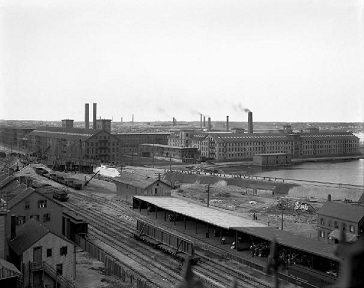
The unskilled laborers were not considered important enough to factor into the decision making process. On October 1st, a vote was had by the Textile Council on the new proposal. While the communists considered this a sell-out, the Textile Council were vocal about simply wanting to get the community back to work and have the city’s wheels rolling again. For this reason many felt the proposal would be accepted and pass. Unfortunately, the council ended up rejecting the proposal in spite of their desire to city return to normal.
A Reluctant Concession, but Grateful Conclusion
The city newspapers then turned against the Textile Council and blamed them for not compromising. The people began to turn an angry eye towards the Textile Council who expressed that they were a bit confused and would have a re-vote. On October 6th, with pressure from the local media the Textile Council and New Bedford Textile Manufacturers’ Association came to an agreement on the proposed 5% wage cut. The unskilled labor force, having no say, and seeing that he skilled workers were returning to work, simply conceded in spite of the persistence of the Communist Textile Committee in pursuing more and suggesting workers continue the strike. By October 8th the vast majority of New Bedford’s workforce was back in the mills toiling once again and the local police began to arrest any Textile Committee leaders on site to send a message that they were no longer wanted in the city. If no violations were committed, one would be made up on the spot.
This type of activity and unrest continued through December and even spilled into 1929 and resulted in a number of Textile Committee members being deported to their native countries. An easy task considering that the Immigration Committee flew under the U.S. Department of Labor in which agent Charles G. Wood was commissioner.
Over 20,000 factory workers went on a strike for six months and ultimately ended in a 5% pay cut, being the largest labor strike in New England during the 1920s. This event and continuing pressure from the unions which were growing in strength injured the textile industry and contributed to its eventual downfall. Many owners simply relocated their factories further south.
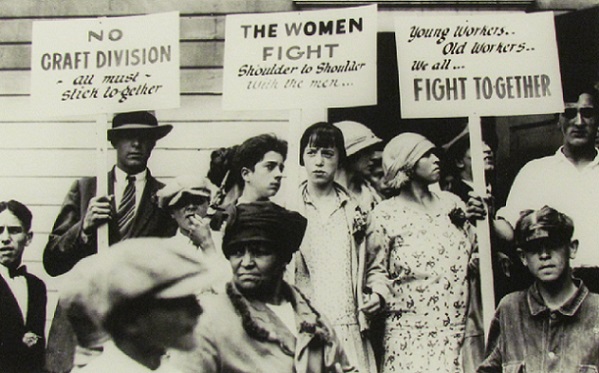
Photo Guide
#01: Textile Workers in Wamsutta Mills? N.B. Whaling Museum.
#02: Police keeping the textile strikers on the move at Sixth & Spring Street. Spinner Pub.
#03: Acushnet Mills. Spinner Publications.
#04: Hathaway Cotton warping machine. N.B. Whaling Museum.
#05: Nashawena Mills. Spinner Publications.
#06: Possible scabs needing protection. Spinner Publications.
#07: Capt. MacKinstry orders leaders to stop parade. Jack Rubenstein and John Pelczor. Spinner Pub.
#08: Fred Beidenkapp speaking at Saulniers lot. Spinner Publications.
#09: Workers with donated food and milk on an empty lot on South Water Street. Spinner Publications.
#10: The arrested carted away in Police Wagon. Spinner Publications.
#11: Pickets under arrest at the sharp Mill. Spinner Publications.
#12: Children snack while parents picket. Spinner Publications.
#13: Textile machine and worker. N.B. Whaling Museum.
 New Bedford Guide Your Guide to New Bedford and South Coast, MA
New Bedford Guide Your Guide to New Bedford and South Coast, MA

















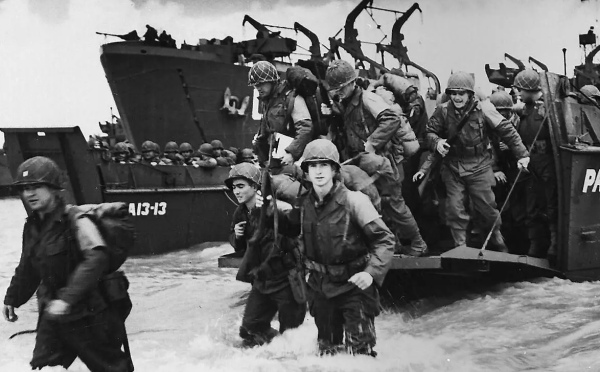


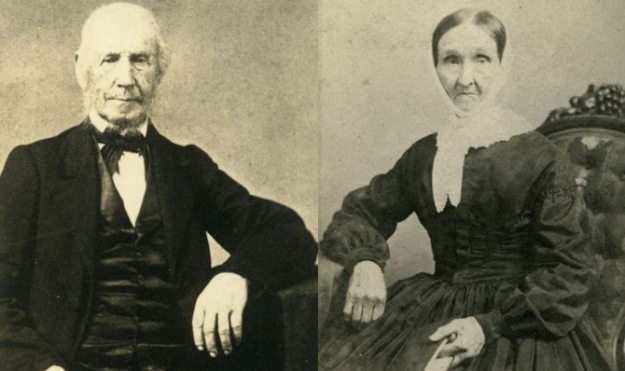
Interesting …..